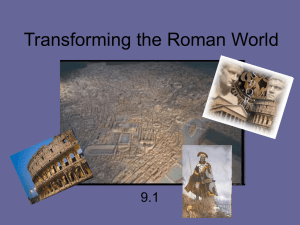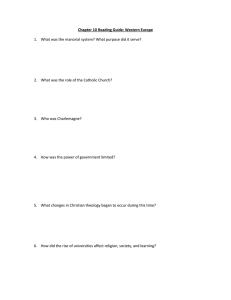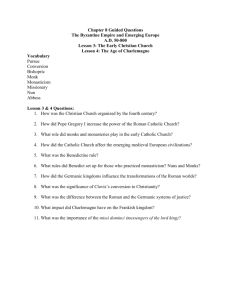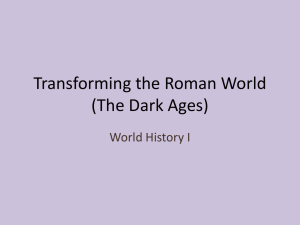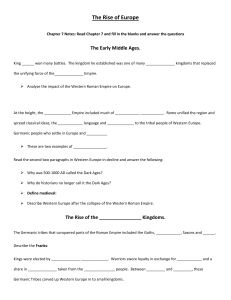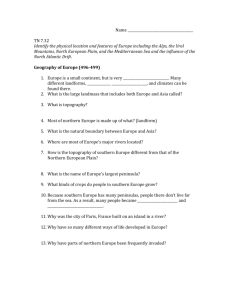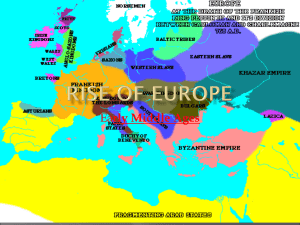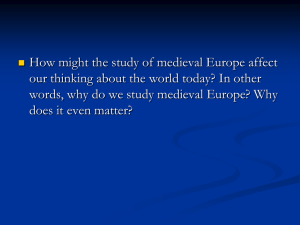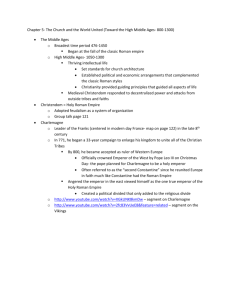MEDIEVAL EUROPE Geography • Europe`s location and resources
advertisement
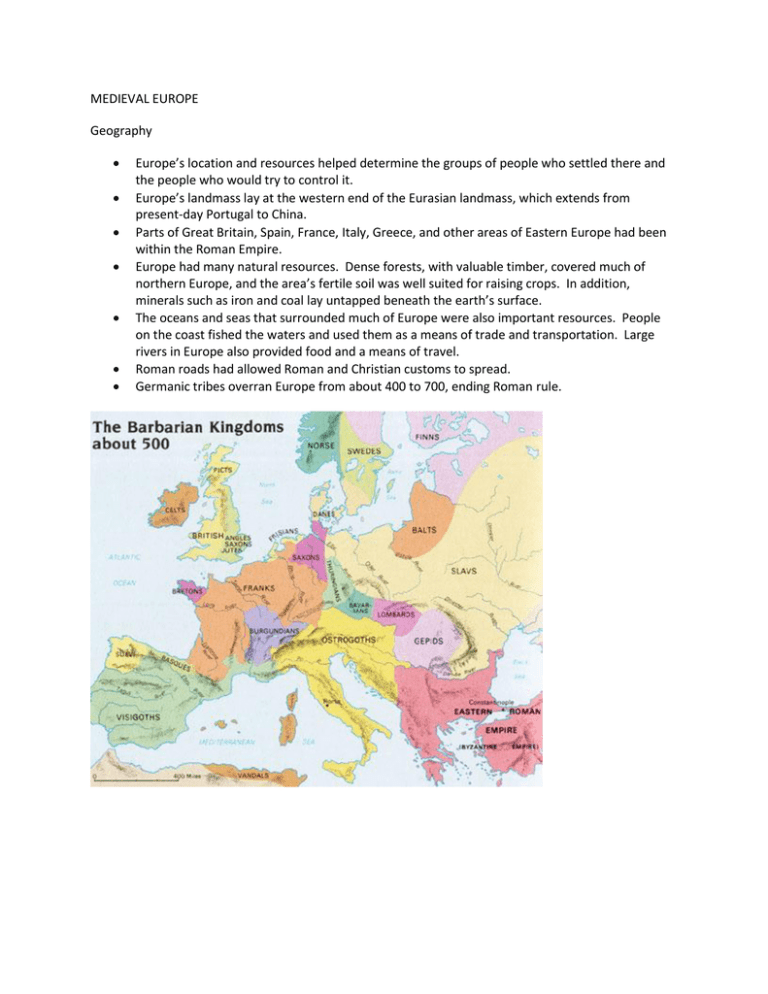
MEDIEVAL EUROPE Geography Europe’s location and resources helped determine the groups of people who settled there and the people who would try to control it. Europe’s landmass lay at the western end of the Eurasian landmass, which extends from present-day Portugal to China. Parts of Great Britain, Spain, France, Italy, Greece, and other areas of Eastern Europe had been within the Roman Empire. Europe had many natural resources. Dense forests, with valuable timber, covered much of northern Europe, and the area’s fertile soil was well suited for raising crops. In addition, minerals such as iron and coal lay untapped beneath the earth’s surface. The oceans and seas that surrounded much of Europe were also important resources. People on the coast fished the waters and used them as a means of trade and transportation. Large rivers in Europe also provided food and a means of travel. Roman roads had allowed Roman and Christian customs to spread. Germanic tribes overran Europe from about 400 to 700, ending Roman rule. The Frankish Empire The Germanic people who overran the Roman Empire were warriors, farmers, and herders. Their culture differed greatly from that of the Romans they had conquered. Germanic tribes were governed by unwritten laws and customs and ruled by elected kings. From about 400 to 700, warrior tribes divided Europe and fought for control of various territories. During this time, the Franks emerged as the most powerful and successful tribe in Gaul, or present-day France. Clovis, a brilliant and ruthless leader, became king of the Franks. Clovis is probably best known for his conversion to Christianity, which gained him a powerful ally in the Christian Church. An important battle took place between advancing Muslims and the Franks at Tours in 732. The Franks defeated the Muslims and they advanced no further than Spain. Had the Muslims won, the history of Europe may have been drastically changed. Charlemagne During the 800s, Charlemagne, a Frankish king, built an empire that stretched across modernday France, Germany, and part of Italy. In 800 Pope Leo III, the head of the Christian Church at the time, called for help against rebellious nobles in Rome. Charlemagne answered the pope’s call and defeated the Roman nobles in battle. To show his gratitude, Pope Leo III, crowned Charlemagne “Holy Roman Emperor” on Christmas Day 800. The crowning of Charlemagne helped revive the ideal of a united Christian Church and empire. After being named emperor, Charlemagne strengthened his rule and attempted to create a united Christian Europe. Working closely with the Roman Catholic Church, he helped spread Christianity to the far reaches of the empire. Charlemagne appointed nobles to rule local areas. He gave them land, expecting them in return to help with the defense of the empire. As a way to control these rulers, Charlemagne regularly sent out officials called missi dominici to check on conditions throughout the empire. Charlemagne also encouraged learning. He set up a school to ensure the education of government officials. He also established libraries where scholars copied ancient texts, including the Bible and science and history texts written in Latin. When Charlemagne died in 814 his empire quickly fell apart as his heirs battled for control. In 843, Charlemagne’s grandsons signed the Treaty of Verdun, which divided Charlemagne’s empire into three separate kingdoms, one for each grandson. Charlemagne had a lasting influence. His strong government was a model for future medieval rulers. Hel also helped spread Christianity to northern Europe.
